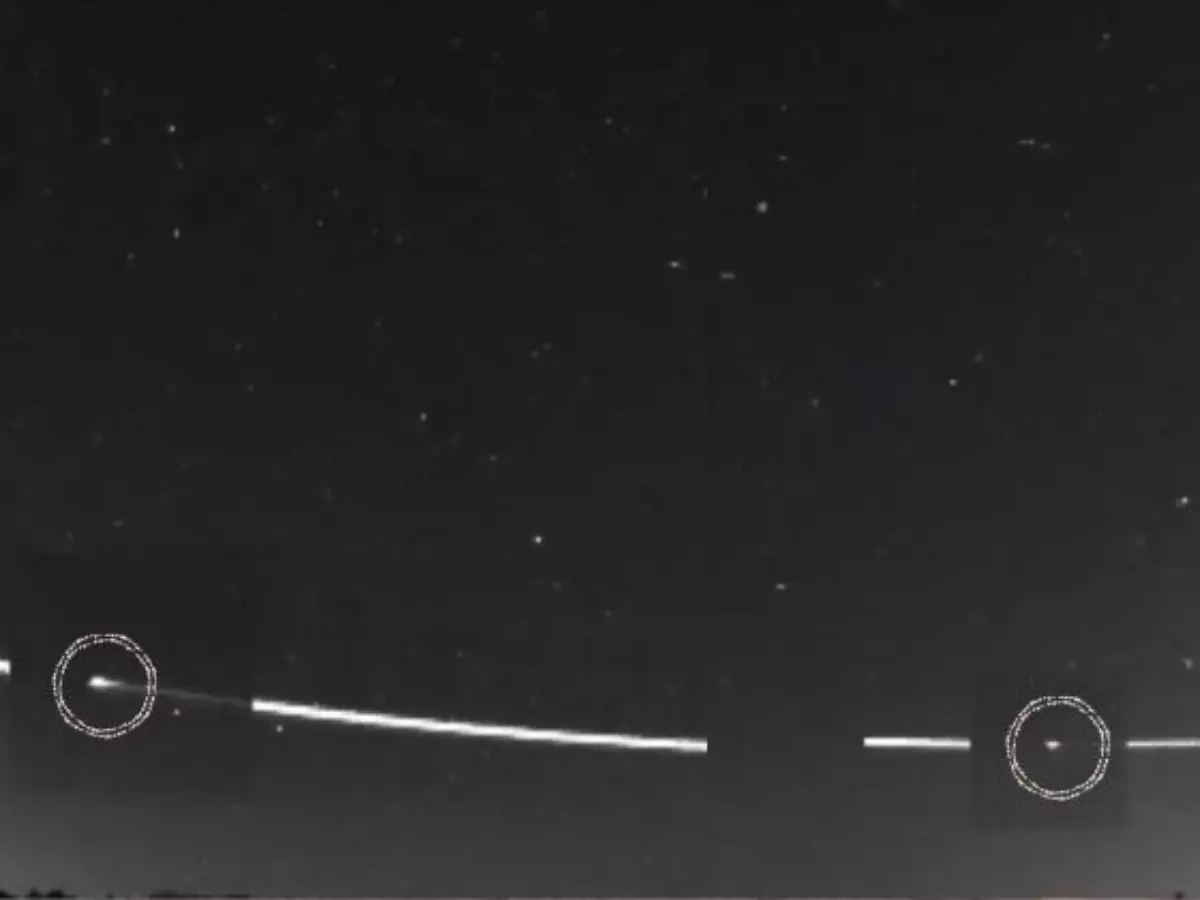An Earthgrazing Fireball Apparently Bounced Off Our Planet's Atmosphere
More recently a meteor bounced off Earth's atmosphere. Software engineer turned astronomer Denis Vida recently posted a video of an Earthgazer that was seen above North Germany and Netherlands.

A number of asteroids flew past earth in the last few days, none came threateningly close. Earlier in the year, scientists had spotted an asteroid shaped like a face mask heading towards the Earth. After this news people joked that even asteroids are keeping distance from earth during the pandemic.
More recently, a meteor bounced off Earth's atmosphere. Software engineer turned astronomer Denis Vida recently posted a video of an earthgrazer that was seen above north Germany and Netherlands.
(1/2) An earthgrazer above N Germany and the Netherlands was observed by 8 #globalmeteornetwork cameras on Sept 22, 03:53:35 UTC. It entered the atmosphere at 34.1 km/s, reached the lowest altitude of ~91 km and bounced back into space!@westernuScience @IMOmeteors @amsmeteors pic.twitter.com/5EgRivdcsu
¡ª Denis Vida (@meteordoc) September 22, 2020
An earthgrazing fireball (or earthgrazer) is a very bright meteor that enters Earth¡¯s atmosphere and leaves again. Denis in his viral tweet mentions, 'It entered the atmosphere at 34.1 km/s, reached the lowest altitude of ~91 km and bounced back into space!'
After this other professional star gazers commented on the post, mentioning how they too spotted the earthgrazing fireball.
Twitter user and Dutch archeologist Dr Marco Langbroek also shared some information regarding the earthgrazer. 'Some preliminary results on the earthgrazing fireball of yesterday morning, from Dutch all-sky meteor camera images. Rare case of a meteor that definitely went in and out of the atmosphere again! Just like the famous 1972 Grand Tetons fireball', he tweeted. Joking about the passing meteor Dr Marco further wrote, 'Even the meteors try to avoid our planet in 2020...'
Some preliminary results on the earthgrazing #fireball of yesterday morning, from Dutch all-sky #meteor camera images.
¡ª Dr Marco Langbroek (@Marco_Langbroek) September 23, 2020
Rare case of a meteor that definitely went in and out of the atmosphere again! Just like the famous 1972 Grand Tetons fireball@MVerstraaten @cgbassa @Doenker pic.twitter.com/cYIPXb1oOE
The Great Daylight Fireball that Dr Marco Langbroek mentioned in his tweet, was an earthgrazing fireball that passed within 57 kilometres of Earth's surface on August 10, 1972. It entered Earth's atmosphere at a speed of 15 kilometres per second in daylight over Utah, United States and passed northwards leaving the atmosphere over Alberta, Canada.
The Dutch meteor camera network catched some 600 km of trajectory, but probaly missed the start and end! It went from horizon to horizon...
¡ª Dr Marco Langbroek (@Marco_Langbroek) September 23, 2020
(image below is a stack of two images by @cgbassa) pic.twitter.com/pmh8CHwyUB
Explaining the curve of the Earthgrazer he said, 'Note that the apparent "curve" does not mean it travelled on a curved trajectory. That "curve" in reality is due to the curved earth surface below the fireball!'
Some people who did not know about the Earthgrazer dismissed it as a satellite and only realised later what they saw.
One person commented, 'just checked my images from that night and found this at that exact time, from Cambridgeshire, UK (towards top of frame). When I flicked through the images I assumed it was a satellite due to length'.
Hey Denis - just checked my images from that night and found this at that exact time, from Cambridgeshire, UK (towards top of frame). When I flicked through the images I assumed it was a satellite due to length (though a fast one - this is a 30s exposure!). pic.twitter.com/Vzk4UdsyA1
¡ª Paul Haworth (@paulhaworth) September 23, 2020
Another one wrote, 'I saw it on the security camera in The Netherlands'.
I saw it on the security camera in The Netherlands. pic.twitter.com/KywJfHUtpg
¡ª Lilian van Kaathoven (@ikelilly) September 23, 2020
Seems like the meteor knew better than to stick around Earth in 2020.
